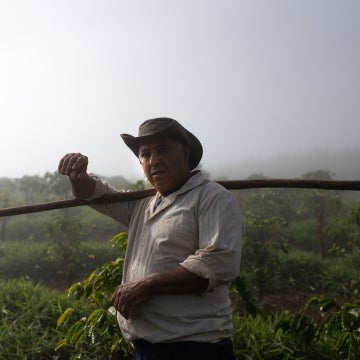The global risk landscape is evolving at an unprecedented pace, posing significant threats to attaining the Sustainable Development Goals (SDGs). As extreme weather, macroeconomic shocks, conflict, and other risks intensify and intertwine, they can create ripple effects that amplify existing vulnerabilities and put both human and development progress in peril. People living in poverty bear the brunt of these crises, which weakens their ability to contribute economically and poses a threat to social stability. Therefore, developing products and services that strengthen their resilience is crucial to getting back on track to meet the SDGs.
However, despite increasing efforts to build resilience, we still lack a comprehensive understanding of what works, for whom, and in what contexts. Without stronger evidence and impact measurement, resilience strategies risk being ineffective or misaligned with the needs of society.
Through the Financial Inclusion 2.0 initiative, CGAP has explored existing evidence to better understand how financial services can contribute to various development outcomes, including increased resilience. Our findings are encapsulated in the newly launched Impact Pathfinder, a global public good that provides insights into the links between financial services, increased resilience, and development outcomes.
Inclusive finance is essential for building resilience
Overall, evidence shows that insurance, credit, digital payments, and savings all play a meaningful role in building the resilience of vulnerable populations and small businesses globally. The Impact Pathfinder examined resilience through a collective 176 studies that paint a strong picture of financial services’ role in enhancing resilience.
Insurance, credit, digital payments, and savings all play a meaningful role in building the resilience of vulnerable populations and small businesses globally.
In particular, literature primarily focusing on remittances found a positive link between digital payments and rural households’ and farmers’ ability to better prepare for and absorb climate-related shocks. Digital payments help users build cash reserves or save, providing critical liquidity during crises. For instance, a study in Burkina Faso indicates that mobile money users are more inclined to save for unexpected events compared to non-users.
Further, digital payments can be more convenient than cash by allowing quicker access to funds from potentially more varied sources, and they also enable greater control, security, and flexibility over funds. A study in Mozambique found that one year after experiencing floods, households with access to mobile money services were 33 percentage points more likely to receive remittances than households without access.
Insurance can also play an essential role in enabling rural households and farmers to absorb and recover from climate shocks. Insurance payouts can help farming households smooth consumption and avoid negative coping strategies—if certain conditions, like timely payouts, affordable premiums, and payouts covering actual losses, are met. A study from Ghana finds that insurance reduced the rate of missed meals in farming households affected by climate shocks from 23% to 15%. Payouts can also enable farming households to maintain and potentially expand their farmland, as well as increase their use of farming inputs such as fertilizer.
That said, although insurance can build the resilience of rural households and farmers, its impact on increasing women’s resilience—and ultimately their economic empowerment—is less clear. Significant knowledge gaps remain around the connections between insurance and women’s enhanced resilience, with much of the existing literature focusing on households, rather than women individually. More research is needed to understand how insurance can be a potent tool for enhancing women’s resilience and economic empowerment.
As for credit, we have explored its impact on resilience in two separate blogs – one on credit and climate resilience and another on credit and resilience of micro- and small enterprises (MSEs).
One size does not fit all
While financial services can play a critical role in resilience-building, their impact depends on how well they are designed and adapted to specific populations and risks. Evidence shows that the same financial tool can be highly effective in one setting but ineffective—or even counterproductive—in another. For example, evidence shows that savings enable women to invest in their businesses, farms, and education, as well as reduce risks through preventative health measures and relevant agricultural technologies.
In particular, group and community-based savings, such as rotating savings and credit associations (ROSCAs) and village savings and loan associations (VSLAs), are helpful, as they foster social commitment and enable women to pool resources—thus building their resilience. In Kenya, group savings led women to boost their investments in preventative health items such as bed nets, water chlorination products, and ceramic water filters by 66%.
While financial services can play a critical role in resilience-building, their impact depends on how well they are designed and adapted to specific populations and risks.
However, these same group effects that can support women in increasing their resilience and economic empowerment can backfire in other contexts. Evidence shows that although savings products can encourage rural households to establish regular savings habits and build reserve funds for emergencies if those households experience frequent and compounding shocks, group-based lending models might not work as well. Such circumstances may indeed lead to many group members electing to withdraw savings simultaneously or withdrawing from the group altogether, impacting the group’s ability to save and repay.
Towards a resilient future for all
There is ample evidence that financial services can increase resilience, and in turn, enable broader development goals. The Impact Pathfinder sheds light on what we know from existing evidence, but this is only the beginning. There are many remaining questions, such as the impact of financial services on recovery from shocks in the longer term and how to tailor specific products, such as insurance, for particular customers, such as women. Addressing these knowledge gaps will increase the positive impact that financial services have on building resilience among vulnerable populations and small businesses.
Going forward, with the Impact Pathfinder’s findings demonstrating the role that financial services have in increasing the resilience of low-income people and small businesses, it is clear that inclusive finance should be integrated into resilience strategies. The Impact Pathfinder’s insights can be leveraged by financial service providers to design solutions with resilience in mind; by policymakers to consider how inclusive finance supports resilience objectives; and by funders to consider how to channel funding towards inclusive finance to support resilience objectives. By integrating evidence, stakeholders at all levels can better leverage inclusive finance to promote a resilient world for all.



